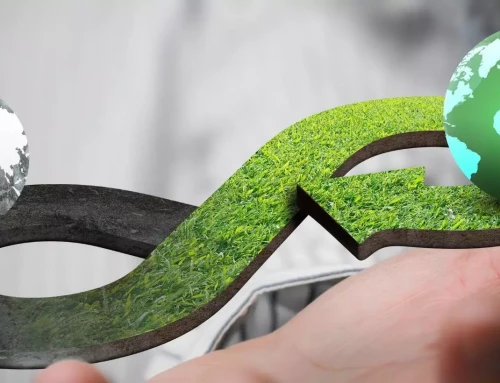How can we increase the effectiveness of recycling?
Recycling is a term we are hearing these days more often than before. It is an integral part of the circular economy that is the foundation for preventing climate change. Recycling is the action or process of converting the resources of a given product into useful material at the end of the product’s use.
We all agree we should recycle all the paper, glass, aluminum, and plastics that we can. However, recycling has not been effective, and it is one of the most debated topics today, especially in the context of plastic pollution and climate change. More than 70% of plastic is estimated to be not recycled globally. The effectiveness of recycling varies across the materials with aluminum, glass, and paper doing better than plastics. The effectiveness of recycling also varies across geographic regions with emerging markets such as India doing better than many parts of the world.
So, what are the key issues around recycling and how can we increase its effectiveness.
A lot of the debate around recycling is very tactical based on what’s worked and what did not work in the past. It is first of all important to recognize that recycling is an essential mechanism to achieve circularity that conserves resources on our planet and reduces greenhouse gas emissions. We should not avoid recycling due to certain failures in the past, and instead continuously look for better solutions and ways to recycle.
So, why are some materials better at recycling compared to a few others like plastics.
Unlike glass, paper, and aluminum, plastics are not endlessly recyclable today. Glass, paper, and metal have been around for several centuries and we have developed efficient ways to recycle them. It’s only been a little over a century since plastics are invented and their use has been mainstreaming in the last few decades. Today, plastic recycling is largely through a thermo-mechanical process that does not replace the original properties of plastics. As a result, recycled plastics have limited use and they cannot be recycled infinitely.
This, however, does not mean that there is no hope for plastic recycling. There are already new technologies emerging that ensure the plastics made from waste can be as good as the original plastics. It is easy for one to say that plastics cannot be recycled endlessly, so let’s stop using them. However, the reality is that plastics are one of the best inventions of mankind with benefits that cannot be overlooked. With the right investments and encouragement to develop efficient recycling systems, we stand to gain compared to completely stopping the use of plastics.
Now, let’s explore why recycling is more effective in some regions compared to others.
Less than 10% of plastic is estimated to be recycled in the US currently. In contrast, more than 60% of plastic is estimated to be recycled in India. The percentage of recycling across other materials such as paper, metal, and glass is also higher in emerging countries such as India compared to developed countries such as the US. This is despite better infrastructure and processes to segregate waste at source in developed countries compared to emerging counterparts.
The economics of recycling plays an important role to be effective. Current conventional methods of recycling are labor-intensive, especially with recycling mixed waste. In countries such as India, where labor cost is relatively lower, the cost of segregation, cleaning, and then making recycled materials from waste is justified. However, this is not the same in the case of developed countries such as the US and Europe. Besides, the bulk of manufacturing of products happens outside the country of use in developed countries – as, in the case of the US,
most of the products used here are made in countries such as China and India. Even if they (e.g. US) recycle the material, unless they localize manufacturing products, these materials don’t have much value. Transporting recycled materials to other countries has its disadvantages.
In the case of plastics, since recycled plastic is not the same as fresh ones, it results in reduced economic value. Still, countries such as Germany and Sweden have achieved more than 90% recycling of PET (type of plastic used to make mineral water, soda, etc.). This is possible with regulatory interventions that incentivize recycling and penalize non-recycling with better infrastructure to support the recycling process. In India, the EPR regulations put the accountability for the recycling of plastics in the hands of the producers. Since its’ implementation by the government, there has been increasing in recycling activity.
What can producers of products do to improve the effectiveness of recycling?
The complexity of recycling is largely dependent on how the materials are used in the final product. In many food packaging applications such as a chocolate wrapper, many layers of different materials are blended in what is called multi-layer packaging (MLP). The different materials cannot be easily separated from MLP and hence it is difficult to make useful materials by recycling MLP. Similar issues are with products such as disposable paper cups with a plastic coating, electronics chipsets, and engineered plywood boards.
Hence, product design plays an important role in ensuring the effectiveness of recycling. If the products are designed such that the materials used in making the products can be easily separated and recycled into their original form helps to improve recycling. As an example, avoiding the use of nails and staples in the manufacturing of furniture and instead of using a modular structure that can be assembled and disassembled with nuts, bolts, and clamps will be useful to increase the recycling effectiveness. Another example is the avoid making products such as paper cups with plastic coating as they can neither be recycled in the paper recycling stream nor plastic recycling stream unless they are separated without contaminating either of the recycling streams.
It is important to design and build products taking the complete product lifecycle into account, ensuring the circularity of the materials used. This requires a different set of design principles to the conventional methods of designing products for their intended use only, and not taking into account their end of life.
It is also important to consider materials and processes that are suitable for recycling. Some materials such as thermoset plastics (e.g., Melamine, epoxy), concrete, and terracotta cannot be recycled once they are formed into final products.
How can consumers help to improve the effectiveness of recycling?
Consumers are much more aware today than before of the devastating impact of climate change and pollution. They play an important role in ensuring the effectiveness of recycling.
While buying, look for products & services where the products and packaging are developed with circularity as one of the key priorities. Avoid using products and packages with hybrid materials (e.g. paper cups & food containers with plastic coating) that make the recycling complex.
At the end of the product’s use, ensure they are discarded in the right stream of waste discharge. It is important to understand your regional municipality’s recycling process and segregate the waste at the source.
How do biocomposites support recycling?
Biocomposites behave similarly to plastics. Biocomposites made with conventional binders such as PP are suitable for recycling in the plastic stream of recycling. They are tested to be suitable for recycling up to 9 times using the traditional thermo-mechanical process.
Biocomposites made with compostable binders such as PLA, and PBAT is suitable for composting. We should encourage the use of home compostable or soil compostable biocomposites, instead of industrial compostable biocomposites as the challenges with industrial composting are similar to recycling.
While making biocomposites, it is best to avoid the use of both traditional and compostable binders together in the composition as this will neither support composting nor recycling. If there are reasons to do this, there must be careful consideration of all factors across the complete product lifecycle.






